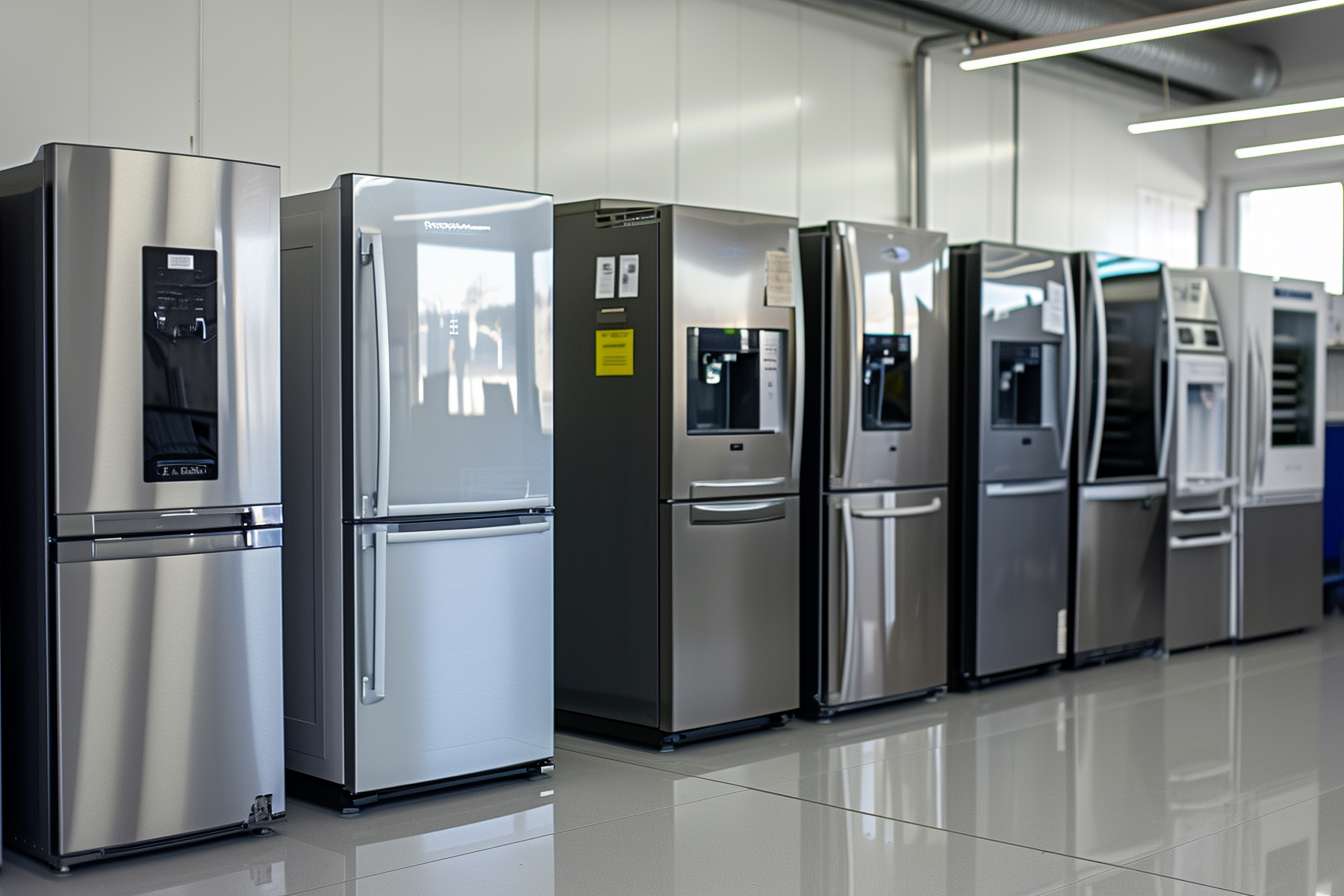What to Know About Choosing the Right Refrigerator for Price and Performance
Selecting the right refrigerator involves balancing multiple factors including size, energy efficiency, features, and cost. With refrigerators lasting 10-15 years on average, this major appliance purchase deserves careful consideration. Modern refrigerators offer increasingly sophisticated technology and design options, but these advancements often come with higher price tags. Understanding which features genuinely improve functionality versus those that merely add cost can help you make a smart investment that meets your household needs while providing the best value over time.

How to Compare Refrigerator Models by Storage Capacity
Storage capacity represents one of the most crucial factors when selecting a refrigerator. For most households, experts recommend 4-6 cubic feet of refrigerated space per adult, with additional space for entertaining or bulk shopping habits. However, raw capacity numbers can be misleading. When comparing models, examine the interior layout to assess usable space. Features like adjustable shelving, door bins, and specialized compartments can significantly impact functionality regardless of listed cubic footage. French door models typically offer wider shelves for large platters, while side-by-side designs provide easier access to frequently used items but often have narrower compartments that may not accommodate wide items like pizza boxes or party platters.
Understanding Energy Efficiency Ratings and Long-Term Savings
Energy efficiency directly impacts both environmental footprint and long-term operating costs. Modern refrigerators use approximately 50% less energy than models manufactured 20 years ago. When comparing models, look for the Energy Star certification and review the yellow EnergyGuide label, which estimates annual operating costs and consumption. Premium energy-efficient models may cost $100-$200 more upfront but can save $300-$500 over the appliance’s lifetime. Additional efficiency factors include proper insulation, door seal quality, and compressor technology. Variable-speed compressors, though more expensive, adapt to cooling needs and use significantly less energy than single-speed alternatives.
Key Factors That Affect Refrigerator Pricing Across Brands
Refrigerator prices vary dramatically based on several key factors including brand reputation, style, and feature sets. Premium brands like Sub-Zero, Viking, and Thermador command higher prices largely due to perceived reliability, build quality, and advanced cooling systems. Design elements significantly impact cost, with built-in and counter-depth models typically priced 30-50% higher than standard-depth equivalents due to more complex installation requirements and premium aesthetics. Stainless steel finishes generally add $100-300 compared to white or black options, while specialty finishes like black stainless or custom panels further increase costs.
Design Considerations That Balance Functionality and Kitchen Aesthetics
The refrigerator’s design affects both functionality and kitchen aesthetics. French door refrigerators offer wide, eye-level fresh food compartments with freezers below, while side-by-side models provide equal access to both compartments but with narrower spaces. Bottom-freezer designs keep fresh foods at eye level but require bending to access frozen items. Top-freezer models, typically the most affordable option, reverse this arrangement. Counter-depth models sit flush with cabinets for a built-in look without custom installation, though they sacrifice approximately 4-6 cubic feet of capacity compared to standard-depth units. When selecting a design, consider your kitchen layout, usage patterns, and whether ease of access to certain compartments matters for household members with mobility concerns.
Smart Features and Technology: Worth the Extra Investment?
Smart refrigerators integrate technology like touchscreens, cameras, and Wi-Fi connectivity, allowing remote monitoring, inventory management, and integration with smart home ecosystems. While offering convenience, these features add $300-1,000 to the purchase price. Basic smart capabilities include temperature alerts and maintenance reminders, while advanced models feature interior cameras for remote viewing of contents, voice assistant compatibility, and touchscreen interfaces for recipes and family communications. When evaluating these options, consider which features would genuinely improve your daily routine versus those that might become novelty items after initial use. Additionally, factor in the potential need for software updates and connectivity troubleshooting over the appliance’s lifespan.
Real-World Refrigerator Pricing and Comparison Guide
When balancing price and performance, understanding the actual cost differences between refrigerator types provides valuable context. The table below compares common refrigerator configurations across different price points:
| Refrigerator Type | Capacity Range | Average Price Range | Notable Features |
|---|---|---|---|
| Top-Freezer | 18-24 cu. ft. | $600-1,200 | Most energy-efficient design, basic features |
| Bottom-Freezer | 18-24 cu. ft. | $1,000-2,000 | Better fresh food access, more drawer options |
| Side-by-Side | 20-28 cu. ft. | $1,100-3,000 | Through-door ice/water, narrow compartments |
| French Door | 20-30 cu. ft. | $1,500-4,000 | Wide shelves, multiple drawer configurations |
| Counter-Depth | 20-24 cu. ft. | $1,800-4,500 | Built-in appearance, reduced depth |
| Built-In | 18-30 cu. ft. | $5,000-12,000 | Seamless integration, panel-ready options |
| Smart Refrigerators | 20-30 cu. ft. | Add $300-1,000 | Wi-Fi connectivity, touchscreens, cameras |
Prices, rates, or cost estimates mentioned in this article are based on the latest available information but may change over time. Independent research is advised before making financial decisions.
What to Consider When Buying a New Fridge That Balances Cost and Quality
Finding the sweet spot between cost and quality requires examining several critical factors. First, assess your genuine needs versus wants—features like water filtration and humidity-controlled crispers offer tangible benefits, while decorative elements may add cost without functional value. Second, research brand reliability through consumer reports and reviews, focusing on repair frequencies and common issues. Some midrange brands offer comparable reliability to premium options at significantly lower prices. Third, consider timing your purchase during major sales events like holiday weekends or end-of-model-year clearances, which can yield 15-25% discounts on quality models. Finally, factor in delivery, installation, and potential removal fees, which can add $100-300 to your total cost. Extended warranties rarely provide value for refrigerators as most significant failures occur either immediately (covered under standard warranty) or well beyond the extended coverage period.
By carefully weighing these factors—storage capacity, energy efficiency, design, features, and real-world costs—you can identify the refrigerator that offers the optimal balance between price and performance for your specific household needs and budget constraints.




